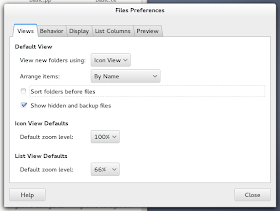Original post:
Closing the laptop lid doesn't have any effect. dmesg returns
(also, why are we suddenly requiring systemd? I thought debian was going to be free from that...that...abomination...but I suppose this will be fixed before jessie goes stable in a couple of years)[95643.717984] systemd-logind[2731]: Lid closed. [95643.718173] systemd-logind[2731]: Suspending... [95648.722146] systemd-logind[2731]: Delay lock is active but inhibitor timeout is reached. [95648.735369] systemd-logind[2731]: Failed to send delayed message: Launch helper exited with unknown return code 1
Anyway, the issue seems to be that systemd hasn't got PID 1:
And in my case I hadWorking suspend/resume requires systemd to be PID 1 [1]. Boot with init=/bin/systemd for that.
in my GRUB_CMDLINE_LINUX_DEFAULT which I changed toinit=/sbin/bootchartd
. Note that my full line isinit=/bin/bootchartd
GRUB_CMDLINE_LINUX_DEFAULT="quiet drm_kms_helper.poll=N init=/bin/systemd initcall_debug printk.time=y resume=UUID=8adf424c-c375-4035-8d5d-181489b4461b resume_offset=7182336"where the resume commands are related to this post about hibernation using a swap file, and the drm_kms_helper.poll is related to this issue.
Anyway, rebooting gives
ps aux|grep systemd
root 1 0.1 0.1 46104 4668 ? Ss 07:31 0:00 /bin/systemd
root 202 0.0 0.4 144868 18416 ? Ss 07:31 0:00 /lib/systemd/systemd-journald
root 221 0.0 0.0 38500 2292 ? Ss 07:31 0:00 /lib/systemd/systemd-udevd
root 877 0.0 0.0 37024 1760 ? Ss 07:31 0:00 /lib/systemd/systemd-logind
message+ 887 0.1 0.0 29148 2520 ? Ss 07:31 0:00 /usr/bin/dbus-daemon --system --address=systemd: --nofork --nopidfile --systemd-activation
Closing (and opening) the lid gives
dmesg|grep PM [..] [ 444.637761] PM: Syncing filesystems ... done. [ 444.668607] PM: Preparing system for mem sleep [ 444.784170] PM: Entering mem sleep [ 445.232203] PM: suspend of devices complete after 447.606 msecs [ 445.232862] PM: late suspend of devices complete after 0.650 msecs [ 445.277535] PM: noirq suspend of devices complete after 44.667 msecs [ 445.360219] PM: Saving platform NVS memory [..] [ 445.509662] PM: noirq resume of devices complete after 100.525 msecs [ 445.510133] PM: early resume of devices complete after 0.295 msecs [ 447.065176] PM: resume of devices complete after 1555.037 msecs [ 447.151847] PM: Finishing wakeup.
i.e. it works.
So I'm now using systemd, I suppose. However, I have yet to explore whether I can still use my precious /etc/network/interfaces file. At least my network interfaces haven't been renamed using the systemd nomeclature which annoyed me so much back when I used Arch, and my /etc/udev/rules.d/70-persistent-net.rules are still respected.








